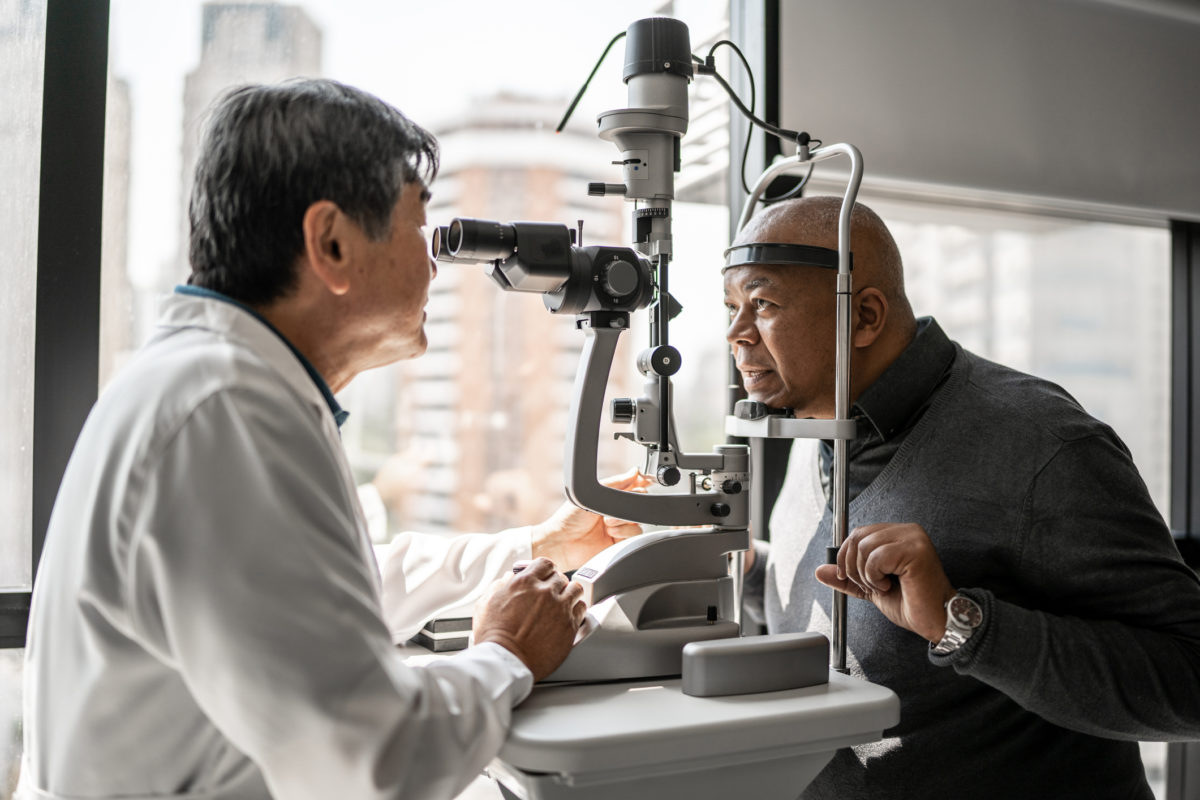Focus on your eye health
By Mary Anna Rodabaugh
As you age, maintaining your eye health becomes increasingly important. Most eye diseases are age-related. According to the American Academy of Ophthalmology, adults aged 65 and older should have a complete eye exam every year or every other year.
“Think of it as wear and tear,” says Dr. Doug Wisner, director of the cataract and primary eye care service at Wills Eye Hospital. “Cataracts are natural wear and tear on the lens of the eye, just like exposure to ultraviolet (UV) light, and natural aging may cause changes in the eye.”
Age-related eye conditions
Dr. Wisner says that almost every person who lives a long life will experience cataracts at some point. A cataract is the clouding of the natural lens inside the eye. Over time, the cloudiness can block light from the eye, causing blurriness or fuzzy spots in your field of vision.
Early symptoms of cataracts include increased difficulty with night driving, a halo effect around lights, unclear vision, difficulty reading in a bright environment and the inability to see things far away. Cataracts can be removed through surgery, which is a common and safe procedure.
Dry eye, while not a disease, is the most common eye health condition that older adults experience, says Dr. Wisner.
Glaucoma and macular degeneration also impact older adults. While there is no exact cause for these conditions, genetics and lifestyle, such as smoking, obesity and unhealthy diet, are often contributing factors. Glaucoma occurs when the eye’s drainage system does not work properly, allowing a buildup of fluid This can cause excess pressure that
damages the optic nerve, leading to a loss of vision.
Macular degeneration may occur as the eye ages. It blurs your central vision due to damage to part of the retina that controls straight-on vision, known as the macula. The condition is treatable but incurable.
“I tell all my patients, just because you are getting older doesn’t mean that you will lose your vision,” says Dr. Wisner. “All of these conditions are detectable and treatable, if not preventable. Eyes can see very well in the 9th, 10th and even 11th decade of life.”
When to see a doctor
Older adults should see their primary care physician at the onset of symptoms, including dry eye.
“The more rapid the vision loss, the more concerning the problem,” Dr. Wisner says. “Pain inside the eye would also be a reason to be seen immediately. A lot of times people don’t seek care because (they fear) what they’re going to find out, particularly when it comes to vision.”
Dr. Wisner notes that cataracts can be fixed at any stage, no matter how badly they have progressed. However, if patients wait too long for evaluation, the risk of complications from surgery is greater.
Proper eye care
Dr. Wisner offers the following tips to help preserve your eyesight:
- Do not smoke. Smoking worsens most types of eye diseases and accelerates cataract development.
- Eat a well-balanced diet. Studies show that a Mediterranean-style diet, emphasizing plant-based foods and healthy fats, may reduce the risk of macular degeneration.
- Exercise regularly. Being active can help slow the progression of glaucoma.
- Protect your eyes. Wear goggles when participating in activities that could cause projectiles to damage your eyes.
- Get a regular eye exam.
Eye health resources
There are many resources available to assist with vision loss. VisionLink is an organization dedicated to helping people who are living with vision loss to achieve greater independence. Programs include classes on home management and independent living skills, using technology as a tool, community-based enrichment, and resource connections. To learn more about VisionLink, call 215-627-0600, ext. 826 or visit VisionLinkPhl.org.
EyeCare America’s Seniors Program, provided by the Foundation of the American Academy of Ophthalmology, connects eligible older adults, aged 65 and older, with local volunteer ophthalmologists who provide a medical eye exam at no out-of-pocket cost. In addition, up to one year of follow-up care is provided for any condition diagnosed during the initial exam. To learn more or to apply, call 1-877-887-6327 or visit aao.org/eyecare-america.
Mary Anna Rodabaugh is a writer, editor and writing coach.




